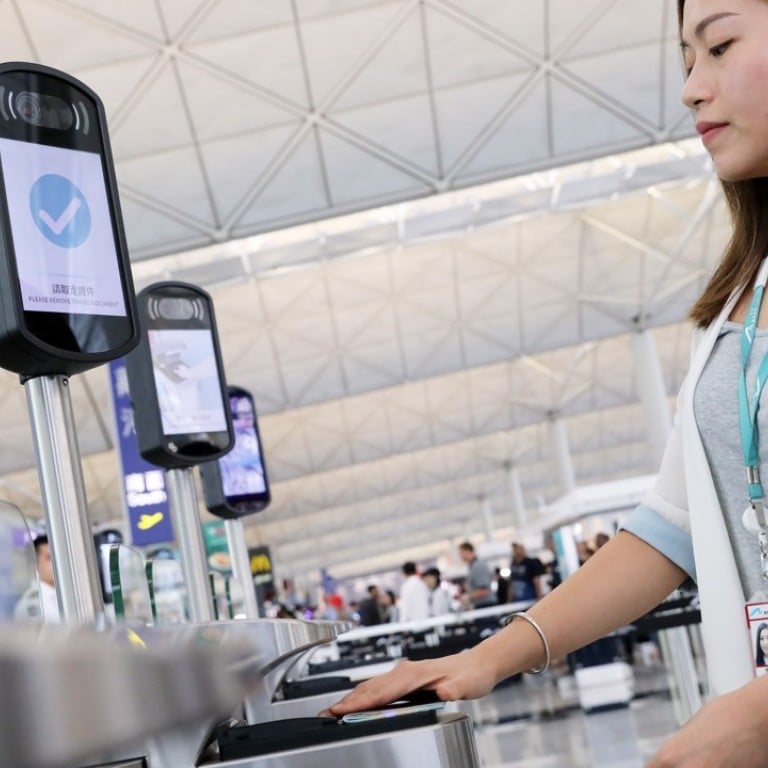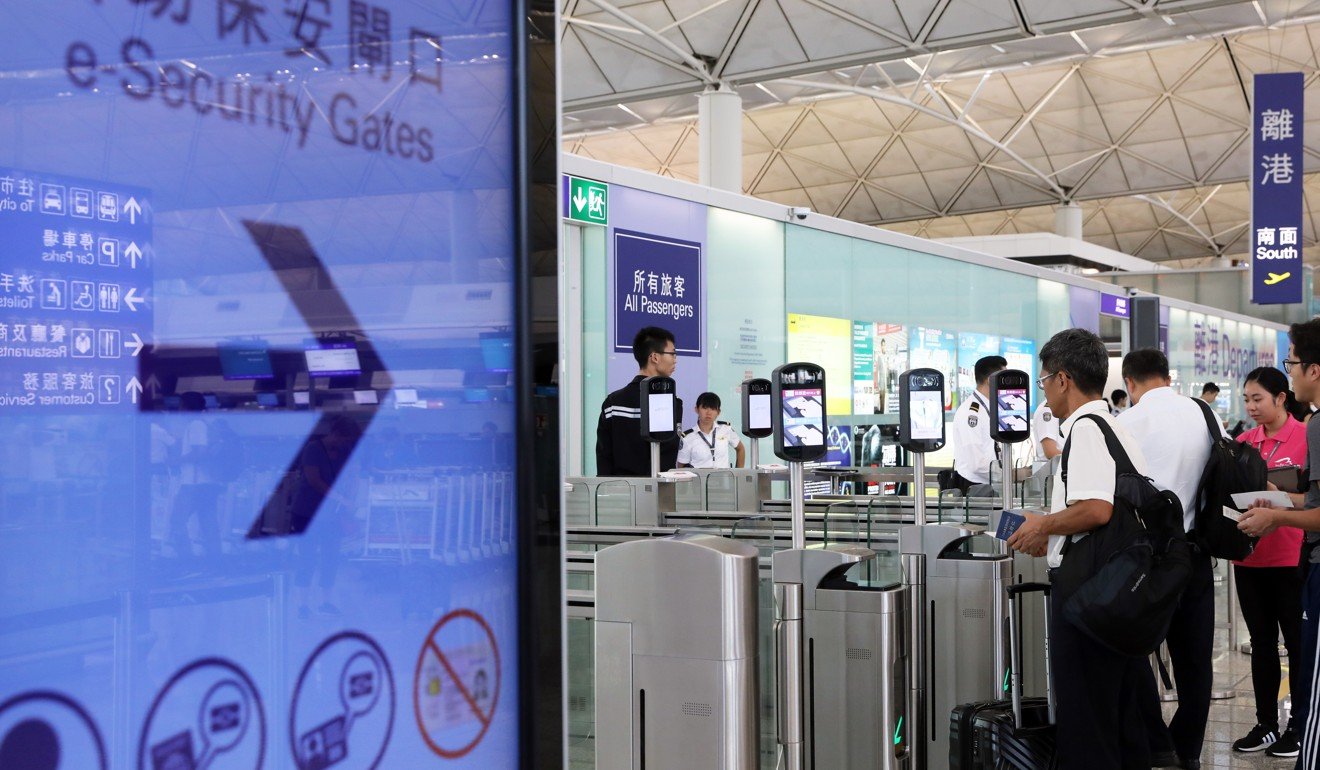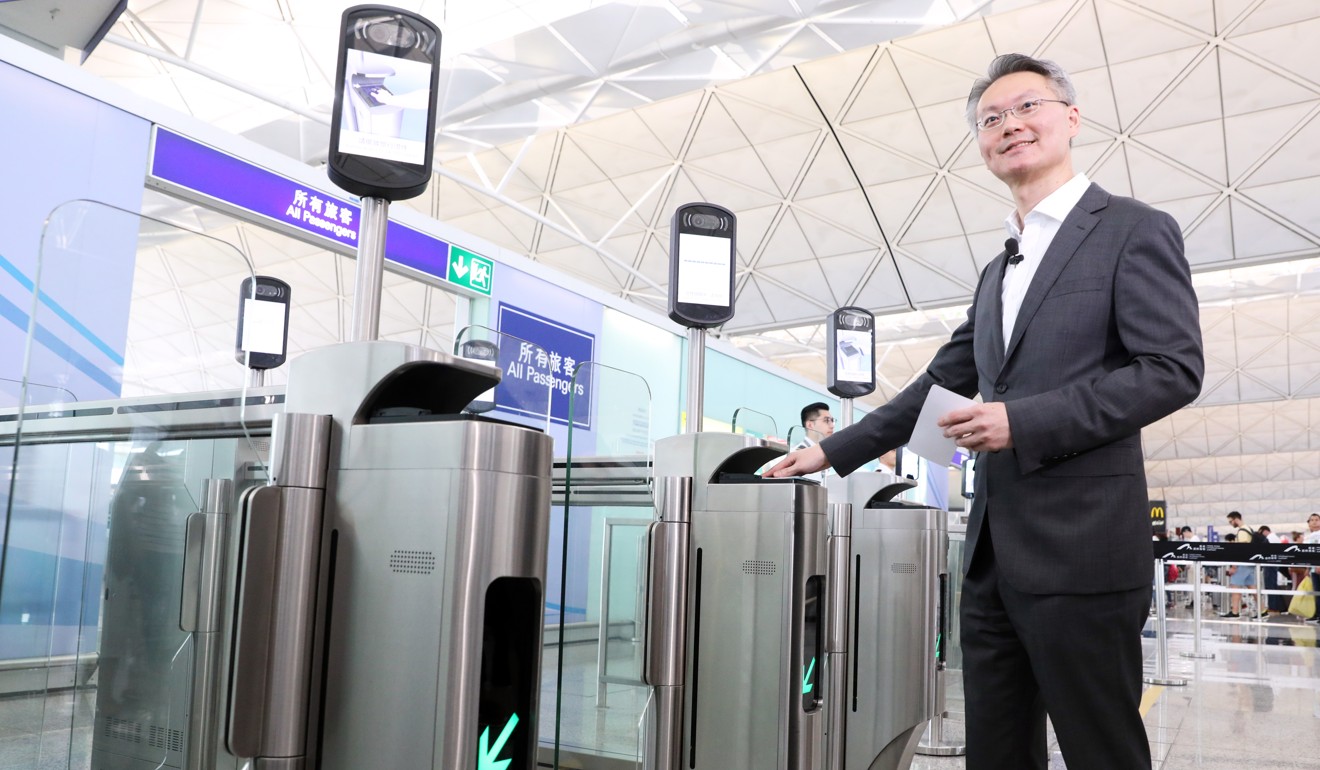
Facial recognition technology installed at Hong Kong International Airport
Automated gates designed to reduce the time it will take for passengers to pass through security checks at airport by using biometric scanners
Hong Kong International Airport has installed facial recognition technology to make it faster for passengers to get through immigration and security checks.
Late to the game, the Airport Authority, which manages the airport, unveiled on Wednesday automated security checks using biometric technology for travellers before entering the restricted area of the airport for screening.
Within two to three years, officials hope that during every process requiring checks – from check-in to security, immigration and at the boarding gate – passengers would only need to have their faces scanned as the identity check.

“In terms of scalability this is the starting point for the whole biometrics journey,” Chris Au Young, general manager of the smart airport concept at the Airport Authority Hong Kong, said, by following airport trends around the world. Singapore’s Changi Airport opened Terminal 4 last year, filled with automated technologies and processes that are now being slowly matched at HKIA.
“We are also going to implement the same biometrics [face] capture at the check-in to enrol the face to show you have a valid boarding pass and passport. Associated with your face, it is the single [digital] token to go through the rest of the checkpoints until you board the aircraft.”
For now, the airport has installed four automated gates, which go into operation on Thursday. By next year, 44 such gates will be in operation.
From start to finish the process takes 20 seconds, potentially being longer than current standards depending on how busy the airport is, and the automation will not reduce manpower, the Airport Authority said.

At present, travellers hand over their passport and air ticket to airport staff. The security officers match the passport photo and the name on the document with the ticket and a facial ID check, which takes seconds.
The automated service is used by placing the passport onto the machine, letting the barrier doors open and then having your face and boarding pass scanned simultaneously.
Full automation of the checkpoint services, including self-boarding gates with facial recognition and upgraded immigration checks will come within a couple of years, the airport said.
Au Young also said talks were ongoing with the Immigration Department to share the face ID.
Thailand and Hong Kong bring in automated immigration checks for travellers
The procedure will not replace the option of using a mobile boarding pass and passengers can still travel with only hand luggage to save time, which currently can take a matter of seconds to pass through some checks.
However, people under the age of 11 will not be able to use the automated system due to the height of the camera.

Automation and self-service is becoming more widely used at other major airports, making operations more efficient and saving passengers and airlines more time and cutting costs.
The Airport Authority has been talking for at least two years about adopting automation on the airfield, such as self-driving baggage containers and conducting automated runway inspections, but little has come to fruition yet.
New Hong Kong airport luggage rules ‘great danger’ to security, cabin crew say
British Airways and its home of Heathrow Terminal 5 has adopted a large number of automated processes in the airport and on the airfield.
Passengers there scan their boarding pass at one of the several automated barriers before being cleared into security with minimal staff presence.
The UK’s national carrier widely uses remote-controlled electric tugs to push smaller Airbus A320-type planes back from parking stands, cutting manpower in half to just one. British Airways is soon going to trial a larger device for bigger jets including the Boeing 777 and 787 Dreamliner.
A self-bag-drop service is widely used at Terminal 5 to save passengers time but also cut the airline’s costs. The same service is not as well used or adopted in Hong Kong, where only a handful of airlines – as of late last year – adopted self-bag-tagging technologies.
Also at Heathrow and at Frankfurt Airport in Germany, self-service has been installed so passengers board the plane by scanning their passport and ticket. In Helsinki, passengers can enter the lounge by scanning their boarding pass, which checks their entitlement to the facility.

